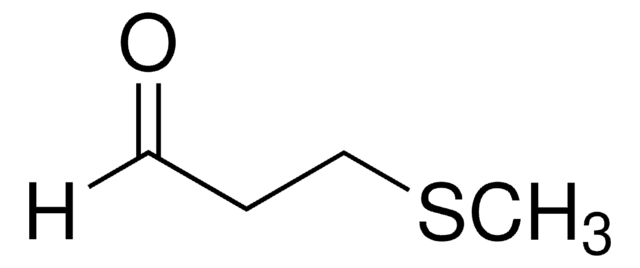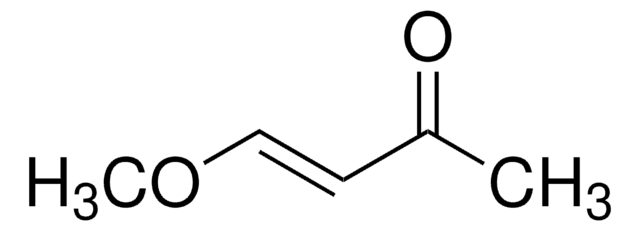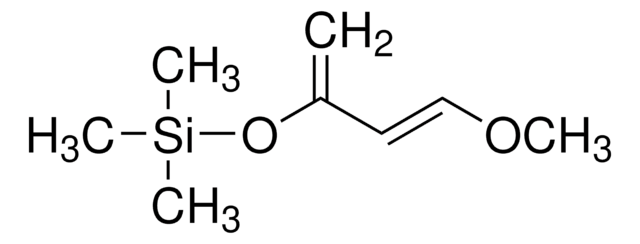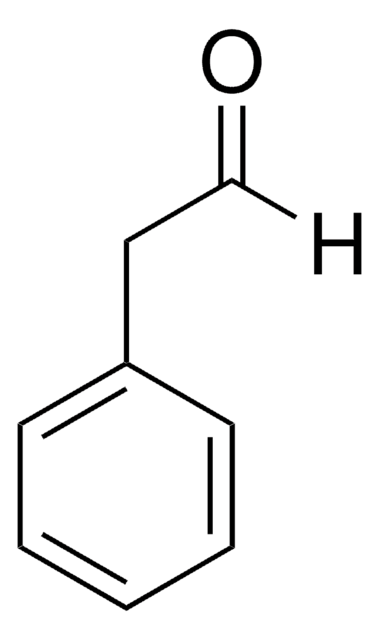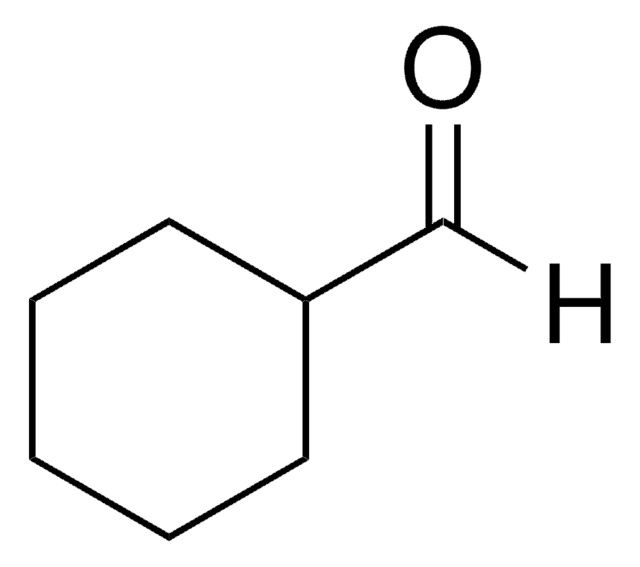277460
3-(Methylthio)propionaldehyde
96%
Synonym(s):
3-(Methylmercapto)propionaldehyde, 3-(Methylthio)propanal, Methional, NSC 15874
About This Item
Recommended Products
vapor density
>1 (vs air)
Quality Level
vapor pressure
760 mmHg ( 165 °C)
Assay
96%
form
liquid
refractive index
n20/D 1.483 (lit.)
bp
165-166 °C (lit.)
density
1.043 g/mL at 25 °C (lit.)
functional group
aldehyde
thioether
storage temp.
2-8°C
SMILES string
CSCCC=O
InChI
1S/C4H8OS/c1-6-4-2-3-5/h3H,2,4H2,1H3
InChI key
CLUWOWRTHNNBBU-UHFFFAOYSA-N
Looking for similar products? Visit Product Comparison Guide
General description
Application
- Oxidative coupling and chemoselective oxidation
- Intermolecular alkyne hydroacylation reactions
- Oxidation of sulfides to sulfoxides
Signal Word
Danger
Hazard Statements
Precautionary Statements
Hazard Classifications
Acute Tox. 3 Dermal - Acute Tox. 4 Inhalation - Acute Tox. 4 Oral - Aquatic Chronic 3 - Eye Dam. 1 - Skin Irrit. 2 - Skin Sens. 1
Storage Class Code
6.1C - Combustible acute toxic Cat.3 / toxic compounds or compounds which causing chronic effects
WGK
WGK 1
Flash Point(F)
165.2 °F - closed cup
Flash Point(C)
74 °C - closed cup
Personal Protective Equipment
Choose from one of the most recent versions:
Already Own This Product?
Find documentation for the products that you have recently purchased in the Document Library.
Customers Also Viewed
Our team of scientists has experience in all areas of research including Life Science, Material Science, Chemical Synthesis, Chromatography, Analytical and many others.
Contact Technical Service